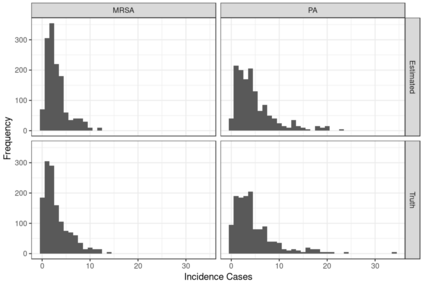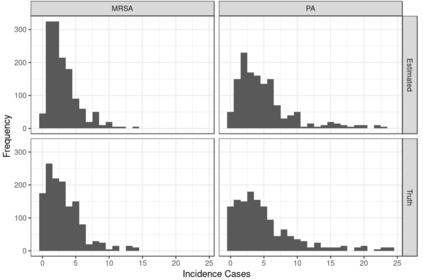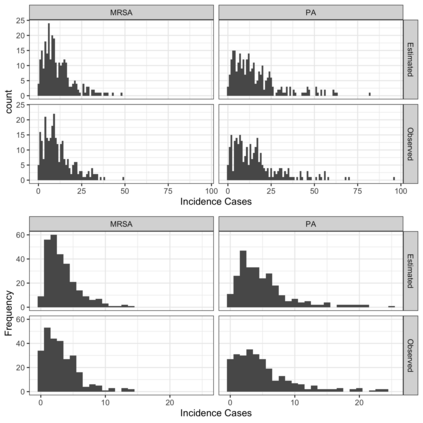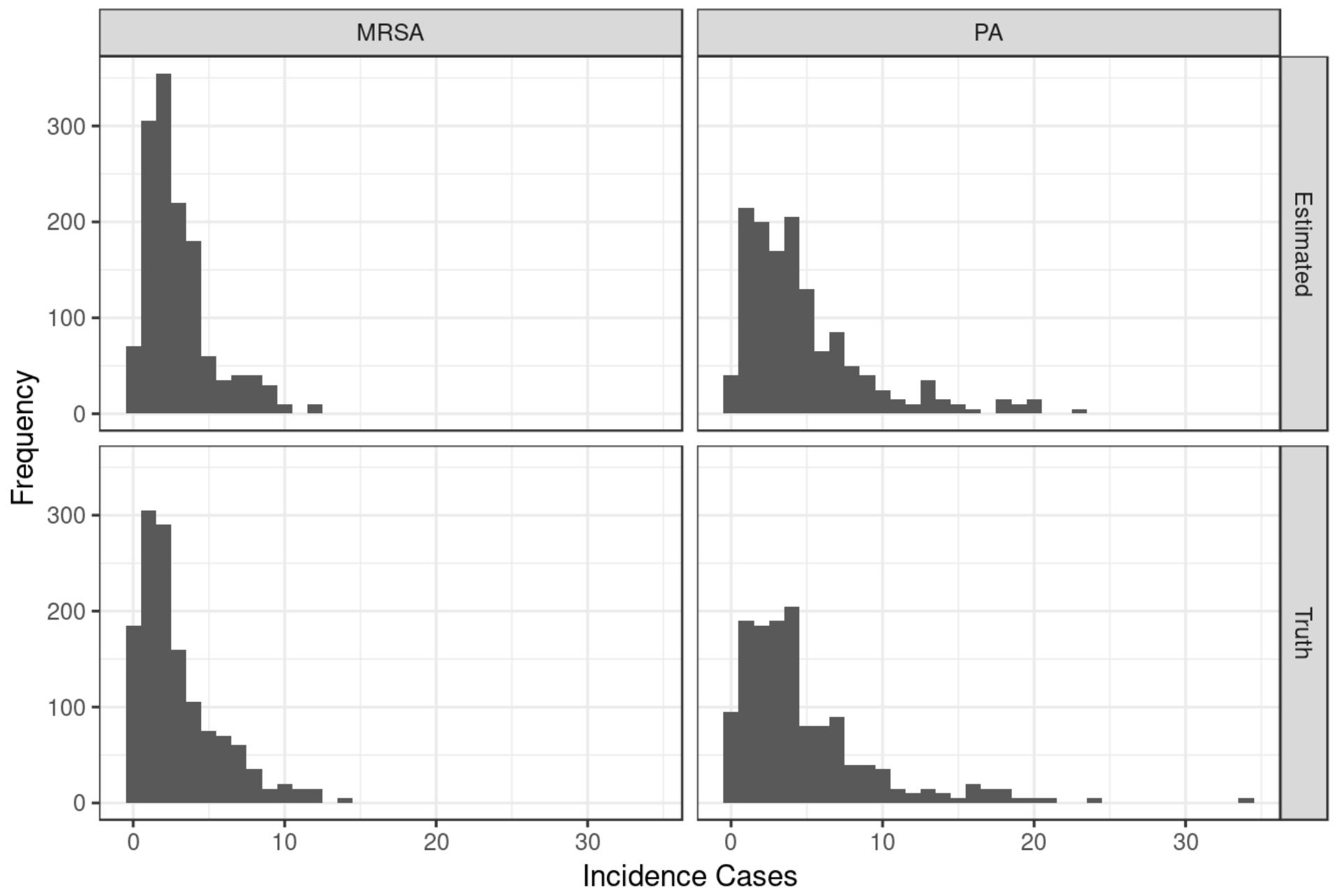There is a constant need for many healthcare programs to timely address problems with infection prevention and control (IP&C). For example, pathogens can be transmitted among patients with cystic fibrosis (CF) in both the inpatient and outpatient settings within the healthcare system even with the existing recommended IP&C practices, and these pathogens are often associated with negative clinical outcomes. Because of limited and delayed data sharing, CF programs need a reliable method to track infection rates. There are three complex structures in CF registry data: recurrent infections, missing data, and multilevel correlation due to repeated measures within a patient and patient-to-patient transmissions. A step-by-step analysis pipeline was proposed to develop and validate a risk-adjusted model to help healthcare programs monitor the number of recurrent events while taking into account missing data and the hierarchies of repeated measures in right-censored data. We extended the mixed-effect Andersen-Gill model (the frailty model), adjusted for important risk factors, and provided confidence intervals for the predicted number of events where the variability of the prediction was estimated from three identified sources. The coverage of the estimated confidence intervals was used to evaluate model performance. Simulation results indicated that the coverage of our method was close to the desired confidence level. To demonstrate its clinical practicality, our pipeline was applied to monitor the infection incidence rate of two key CF pathogens using a U.S. registry. Results showed that years closer to the time of interest were better at predicting future incidence rates in the CF example.
翻译:许多保健方案不断需要及时解决感染预防和控制问题。例如,病原体可以在保健系统内的住院和门诊病人中传播到囊肿纤维化(CF)病人中,即使采用了现有的建议IP & C做法,这些病原体往往与负面临床结果有关。由于数据分享有限和延迟,CF方案需要可靠的方法来跟踪感染率。CF登记数据有三个复杂的结构:经常感染、缺失的数据和多层次的相互关系,这是病人和病人之间传染的反复措施造成的。建议逐步分析管道开发和验证一个风险调整模型,以帮助保健方案监测经常性事件的数量,同时考虑到缺失的数据和正确检查数据中反复措施的等级。我们推广了安得森-吉尔模式(脆弱模式),根据重要的风险因素进行了调整,并为预测预测事件的数量提供了信心间隔,预测的变异性来自三个来源。建议逐步分析管道将开发并验证一个风险调整模型,以帮助保健方案监测经常性事件的数量,同时考虑缺失的数据和正确数据,同时考虑到正确数据,这些病原病原体的等级。我们采用了一个更精确的利率模型,用来评估未来预测的准确率。在精确的频率上,用一个比较精确的频率来评估。我们测测测测测测度的方法,以测测测了准确的进度的进度的进度,以测测测度的进度,以测测测度为两年。我们测测测度为了准确的进度的进度。







